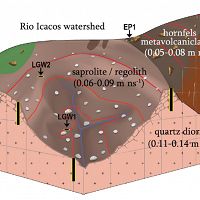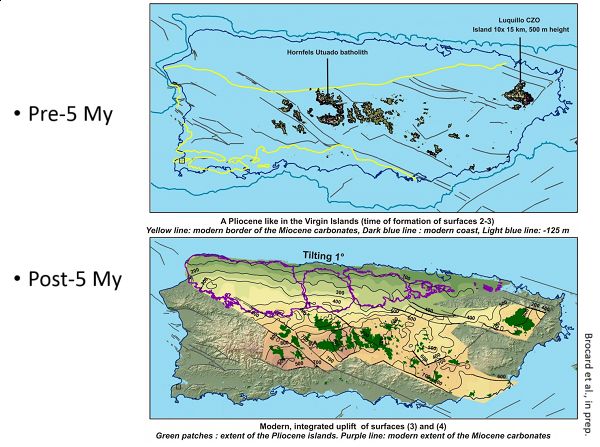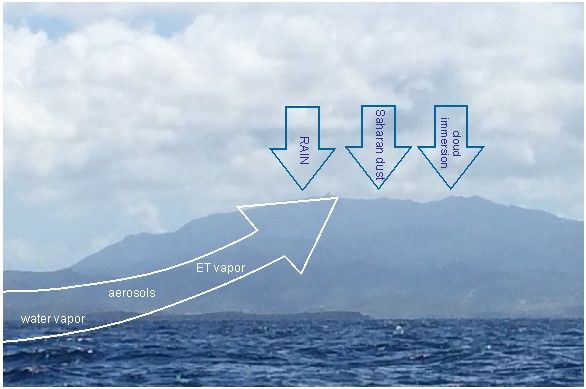Conceptual Models
Overarching question: How do hot spots and hot moments in weathering, biogeochemical cycling, hydrologic processes, and atmospheric inputs drive landscape evolution and CZ function in a humid tropical forest?
How critical zone processes, water balances, and mass fluxes differ in landscapes with contrasting lithology but similar climatic and environmental histories. The critical zone is a function of climate, parent material, biota, topography, and time.
Bedrock-to-Regolith
Bedrock and Regolith Weathering
Conceptual models of deep CZ structure and function.
Forests/Topography
Forest Structure Effects on Topography
Rio Icacos /Rio Blanco Forest structure effects on topography
GASH
ET and Throughfall
The LCZO builds upon a long history of research on ET and throughfall.
Icacos subsurface
Coupling CZ structure and CZ function with observations of the physical and chemical structure.
Coupling CZ structure and CZ function with observations of the physical and chemical structure.
Incision/transport
River incisition, sediment and solute transport
Linking Climate and fluxes at the landscape, channel and reach scales
Cretaceous-aged volcaniclastic sedimentary rocks were intruded by a quartz diorite pluton 48 Ma. Around the pluton, the rocks were metamorphosed to hornfels facies in a contact aureole. The rocks were uplifted in the Luquillo Mountains between 4 and 5 Ma (Brocard et al., 2015), initiating denudation, leading to eventual exposure of the contact aureole at the core of the range.
FA 1: Deep Critical Zone: Geological underpinning that drives all Critical Zone processes
Brocard et al., in prep
FA4: integrating across the mountain landscape: landslides, clouds and dust
Explore Further









